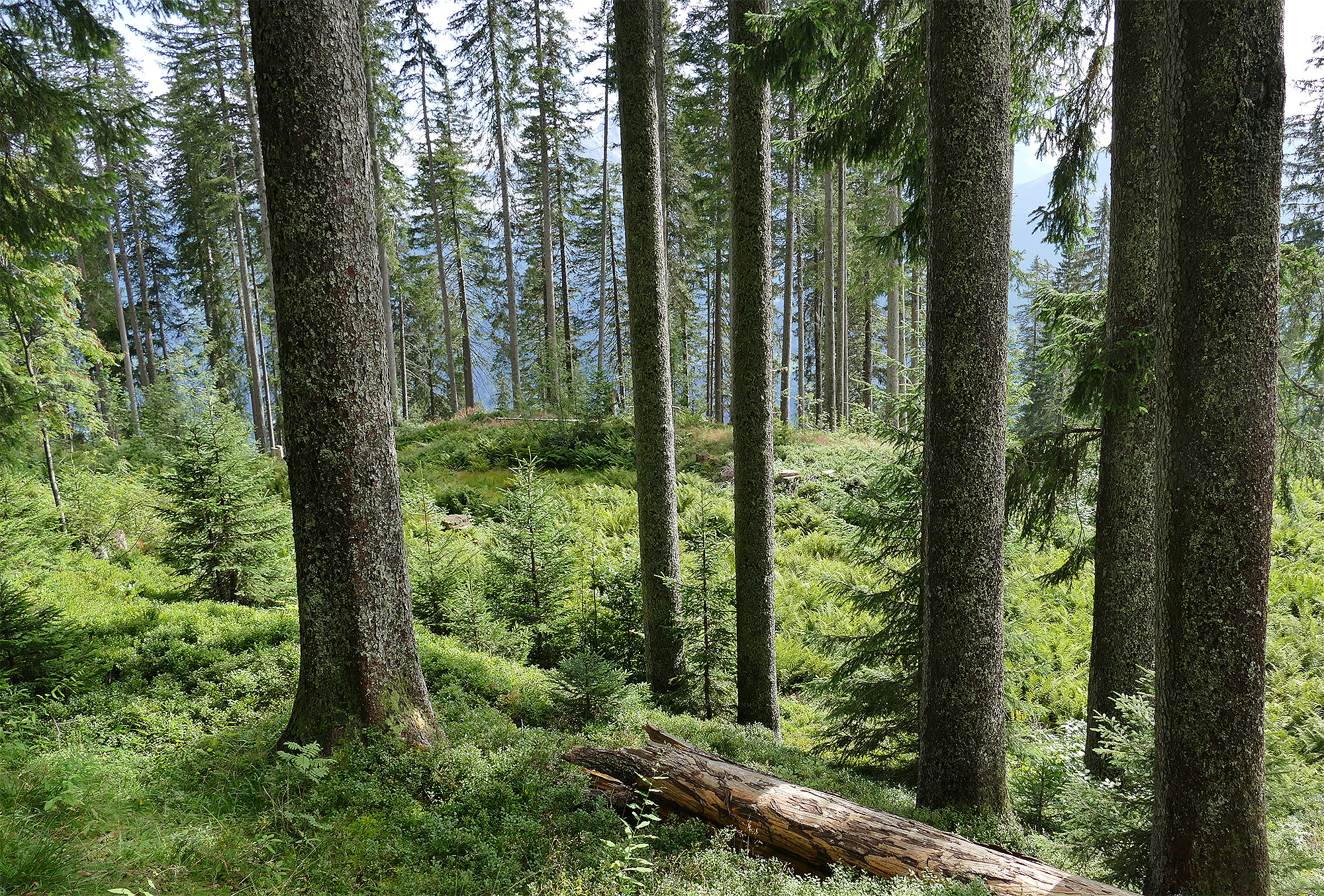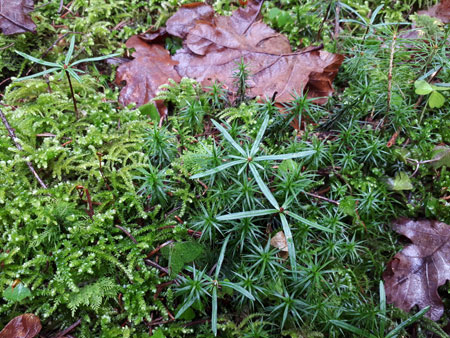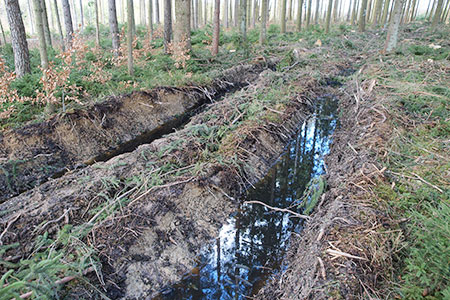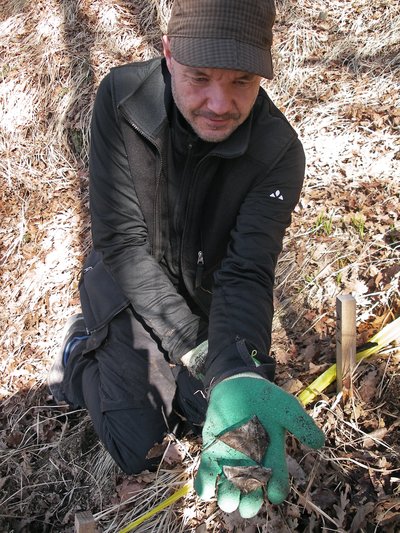
Fig. 1 - Markus Didion has dug up teabags that have been buried for three months. They will be analysed in the laboratory.
Photo: Flurin Sutter (WSL)
The idea may sound strange but it is actually serious ecological research. Soil researchers across the world want to better understand the plant litter decomposition process in forests by burying teabags containing two different types of tea that are available in a standardised form in grocery shops. As part of the carbon cycle, the decomposition of dead plant material is a key factor affecting climate change: when it is decomposed by soil organisms, the carbon stored in the plant biomass is released into the atmosphere again as a greenhouse gas (CO2).
After three months, the first results are available for 336 locations: at this early stage, green tea has decomposed much more quickly than rooibos tea in all habitats, as the international research team reveal in an article published in the journal Science of the Total Environment. According to the authors, this is because green tea contains more water-soluble substances and the carbon in it is bound in other chemical compounds.
The research team, which includes a team from WSL, reported that the local climate, by contrast, played only a minor role over the short period of three months, except in extremely dry or wet locations. The researchers hypothesise that climate change could affect plant species composition not only directly via temperature and precipitation but also indirectly via species-specific decomposition rates. Whether the local climate continues to be less crucial for the decomposition process in the long term will be revealed when the teabags are dug up after 12, 24 and 36 months.
Tea party for soil organisms

Fig. 2 - Map showing the location of the 570 study sites. Violet dots: data available; empty dots: Data not yet available. Click to enlarge. Map Djukic/Brendle 2017
Ecologists have been trying for a long time to determine these decomposition rates using little bags of litter with precise weights. This method enabled them to find out that the decomposition process takes place in two stages: a quick and a slow phase. However, for those studies, they used plant litter from various species and bags with various mesh sizes, meaning that the data were not universally comparable.
It was Dutch researchers who originally came up with the idea of using teabags – perhaps during a tea break? To obtain comparable data from different regions, they buried two types of teabag: one with green tea (in the form of leaves), which decomposes quickly, the other with rooibos tea (ground bark), which decomposes slowly. The idea spread among soil researchers all over the world so that in 2016 they started the global TeaComposition initiative together.
The initiative spans 6 continents, 570 locations and 9 major life zones (biomes), with researchers burying at least 32 teabags at each location, and often twice that number. After 3, 12, 24 and 36 months they will dig up two of each type and determine how much of their mass they have lost. «For the first time, the decomposition processes of plant litter in soil can now be investigated worldwide using a uniform method,» says Marcus Schaub, Swiss representative in the European Long-Term Ecosystem Research Network (LTER-Europe) and Head of the Ecophysiology Group at WSL.
Important factor in the carbon cycle

Fig. 3 - Near the Schänis meteorological LWF monitoring stations, Flurin Sutter sets up the test site according to a uniform statistical design.
Photo: Marcus Schaub (WSL)
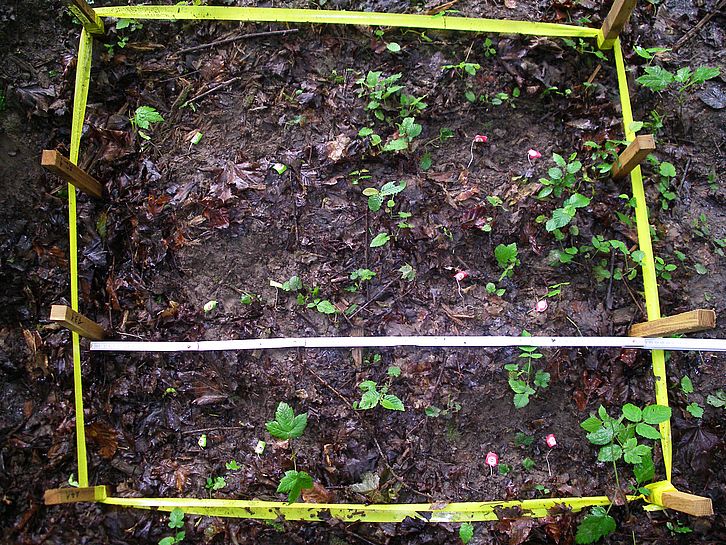
Fig. 4 - Sixteen teabags are buried per square - after 3, 12, 24 and 36 months, two of each type are dug up. The labels partially protrude from the ground.
Photo: Flurin Sutter (WSL)
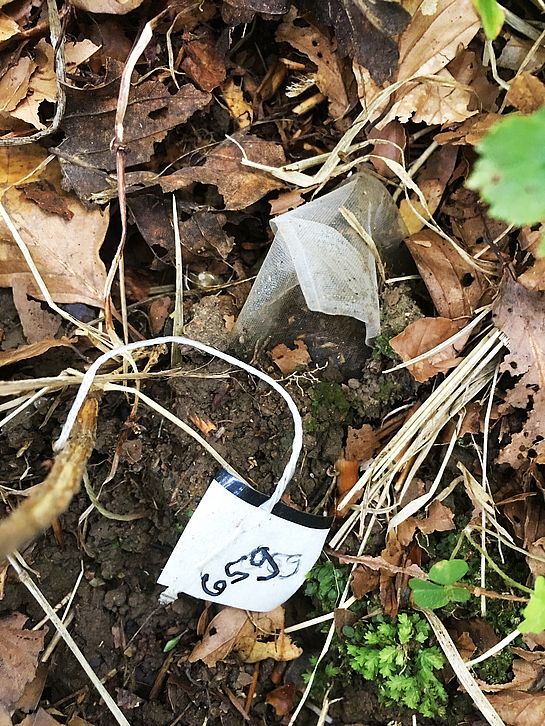
Fig. 5 - Teabag no. 659 is buried in the humus layer.
Photo: Flurin Sutter (WSL)
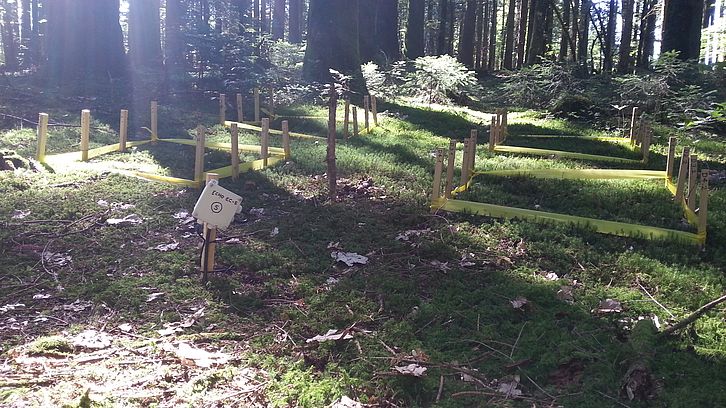
Fig. 6 - At the Vordemwald LWF site, 64 teabags and two types of tea are buried, their decomposition depending on soil moisture among other things. The soil moisture is measured daily by ECH2O EC-5 sensors.
Photo: Flurin Sutter (WSL)
In Switzerland, WSL researchers buried their teabags at eight locations that are part of theLong-Term Forest Ecosystem Research programme (LWF) – a total of 1,216 teabags at eight test sites, some at different altitudes. Sonja Wipf from the WSL Institute for Snow and Avalanche Research SLF also buried teabags at six mountain peaks in Switzerland.
Now they are keen to see what the teabags will reveal after one, two and three years in the ground. Markus Didion from the WSL Resource Analysis Group would like to use computer models to calculate the extent to which litter decomposition contributes to the carbon cycle. He hopes that this standardised global experiment will enable him to make his models more precise. «For us, the teabag experiment is brilliant as it means that we can put our data in a global context.»
Long-term Forest Ecosystem Research LWF
In order to gain a deeper understanding of the processes in the forest the Long-Term Forest Ecosystem Research LWF has been recording the condition of the forest on selected permanent monitoring sites since 1994. One focus is on the effects of air pollution and possible climate change. More information
